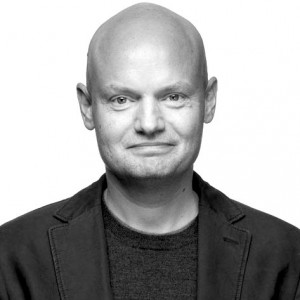
Strategy as a Creative Act: Making Space for Radical Ideas
Similarly, someone on the Nike campus must have suggested building tools and a tracking platform for runners. Again, the logical response would have been to kill this idea on the spot. Do we have any competencies in sensors and computing? No! Do we have any technical capacity at building applications? No! Is there a clear business model and way to recapture some of the value being created? No. Then why would we do this?
Most strategists have an opportunity evaluation framework in their toolkits. It is used to score ideas and opportunities on two vectors.
So how can strategists and business people make space for radical ideas? How do you nurture an environment in which new products and services beyond the organizations current “way things are done” are allowed to take root? How do you allow product strategy to alter corporate strategy?
First, is this a good idea? Does it create value for customers? Is the technology required for the idea mature enough for use with real customers? Is the market very competitive? Are there structural barriers to sustain a competitive advantage?
Second, is this a good idea for us? Does it fit with our current competencies? Do we have the knowledge and skill to do this? Does the proposed product/service fit with our brand? Do we have access to the markets, channels, and customers who would want this product or service?
However you weigh them, these sorts of frameworks will almost always kill radical ideas. And they will prioritize ideas and opportunities that are closest to your core business today. Moreover, the rest of the organization will usually support the kill. Corporate antibodies will come out of the woodwork with dozens of (good) reasons why something can’t be done. Businesses are optimized to deliver their current product/service, and new ideas are disruptive. For example, Nike+ required new engineering capabilities, new skills in sensor technology and tracking, new product support, new retail and go-to-market partners; the list goes on. These were not traditional skills for Nike.
Yet it is the radical ideas that have the capacity to create tremendous value for an organization.These are the ideas that ultimately deliver visionary transformation that sets the company on a new trajectory.From iPod and Apple’s music store to Paypal, product level decisions can change a company completely.
So how can strategists and business people make space for radical ideas? How do you nurture an environment in which new products and services beyond the organizations current “way things are done” are allowed to take root? How do you allow product strategy to alter corporate strategy?
First, focus on the user.
If you can point to clear value being created for real users, it’s easier to defend the idea. Of course you need to find a way for your business to recapture some of that value, but the first step is to show the value.
Second, suspend judgment.
Whenever I’m about to shoot down an idea I remind myself of Google Streetview, or Nike+, or iTunes, and ask myself if those ideas would have failed my framework, too. Be a bit humble to the opportunity! Of course, we can’t invest in every harebrained idea, so a good way to reduce risk is to test ideas. Create simple, cheap experiments to determine if there is any mileage in a radical idea.
Finally, become more comfortable with lateral thinking.
Our brains are wired to tune out lots of stimuli and inputs, because our survival depends on it. We are masters of pattern recognition, and of assigning order to the world. By inclination and training, strategists are likely to have highly developed skills in this pattern recognition, augmented by logic and reason. But inductive and deductive logic are not the only ways to think! Embracing lateral thinking will allow you to be more open to new ideas, and to see the world as it could be, rather than the way it is.

Tim leads a global team of business and product strategists who work alongside frog designers and technologists to bring game changing innovations to market. He has worked in Silicon Valley for 15 years in a variety of product, strategy and marketing roles.
We respect your privacy
We use Cookies to improve your experience on our website. They help us to improve site performance, present you relevant advertising and enable you to share content in social media. You may accept all Cookies, or choose to manage them individually. You can change your settings at any time by clicking Cookie Settings available in the footer of every page. For more information related to the Cookies, please visit our Cookie Policy.